Abstract
Two in vitro tests, the serum killing level and the serum bactericidal rate assays, were evaluated for correlation with therapeutic efficacy in the rabbit model of Staphylococcus aureus endocarditis. Animals were treated with nafcillin alone and in combination with tobramycin or gentamicin. Both were effective therapies, but rapidity of vegetation sterilization by the single and combined regimens was shown by the serum bactericidal rate assay but not the serum killing level assay. As a direct measure of bactericidal activity in serum during therapy, the serum bactericidal rate assay may be a clinically useful supplemental test for providing information that the serum killing level assay cannot.
Full text
PDF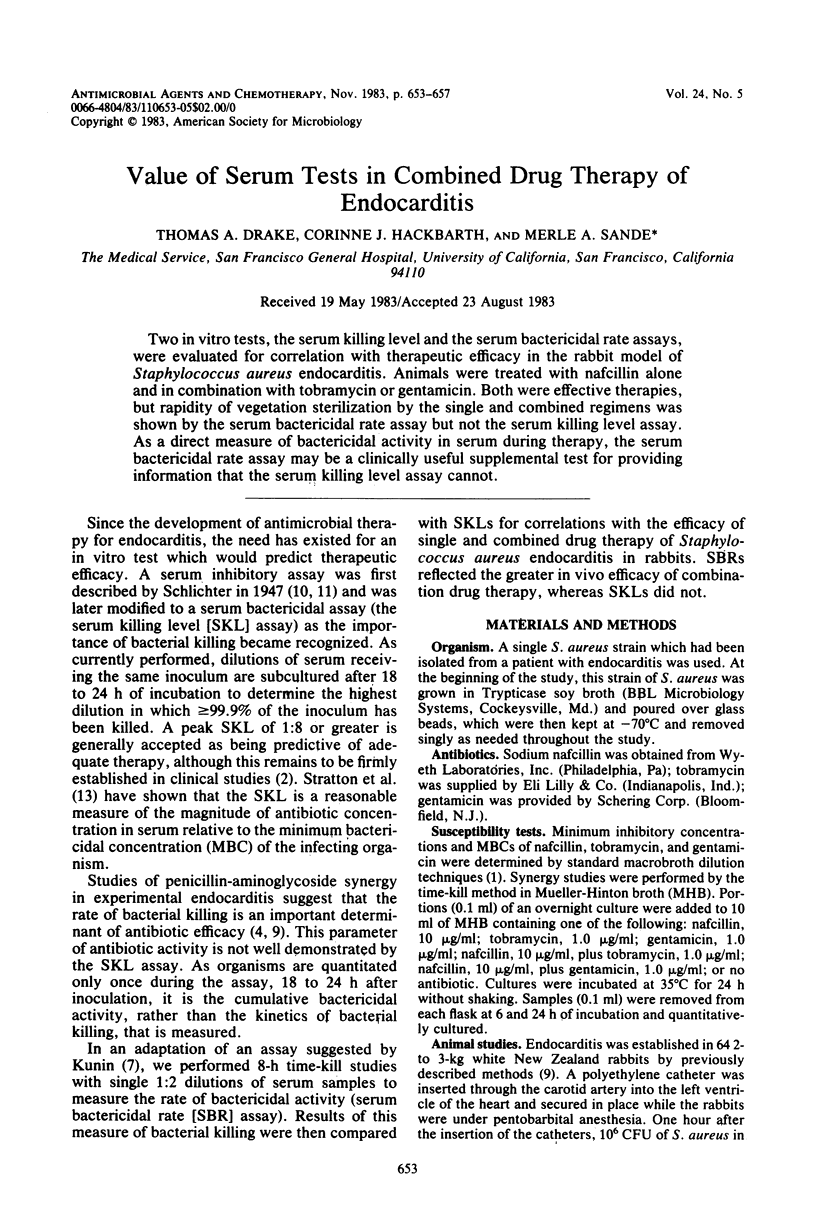
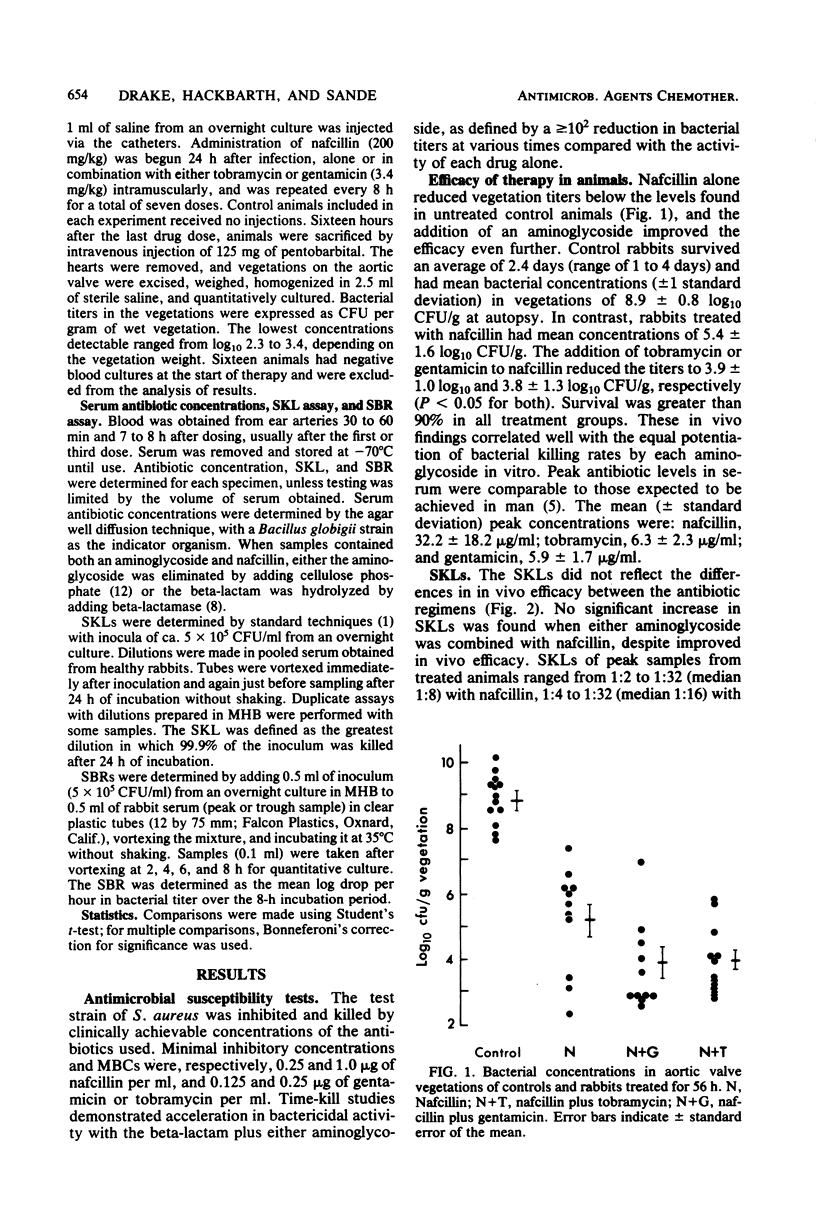
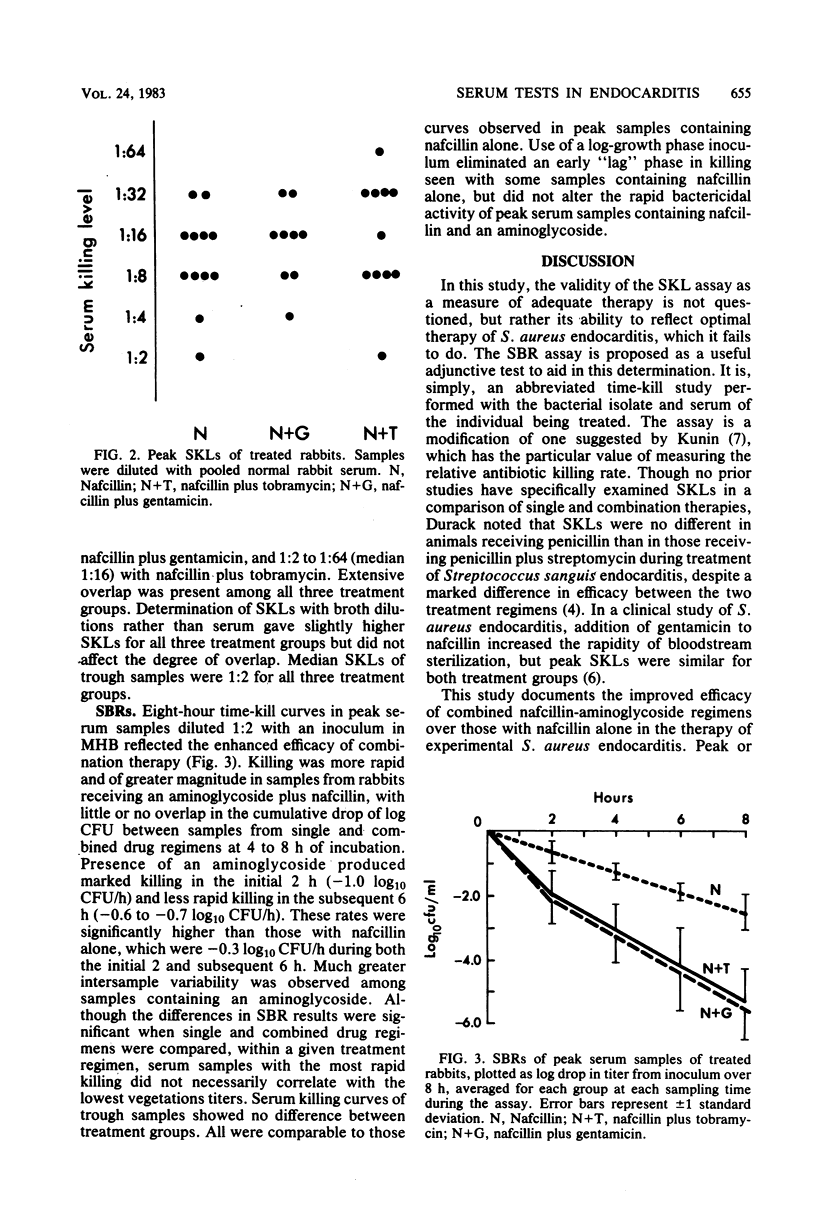
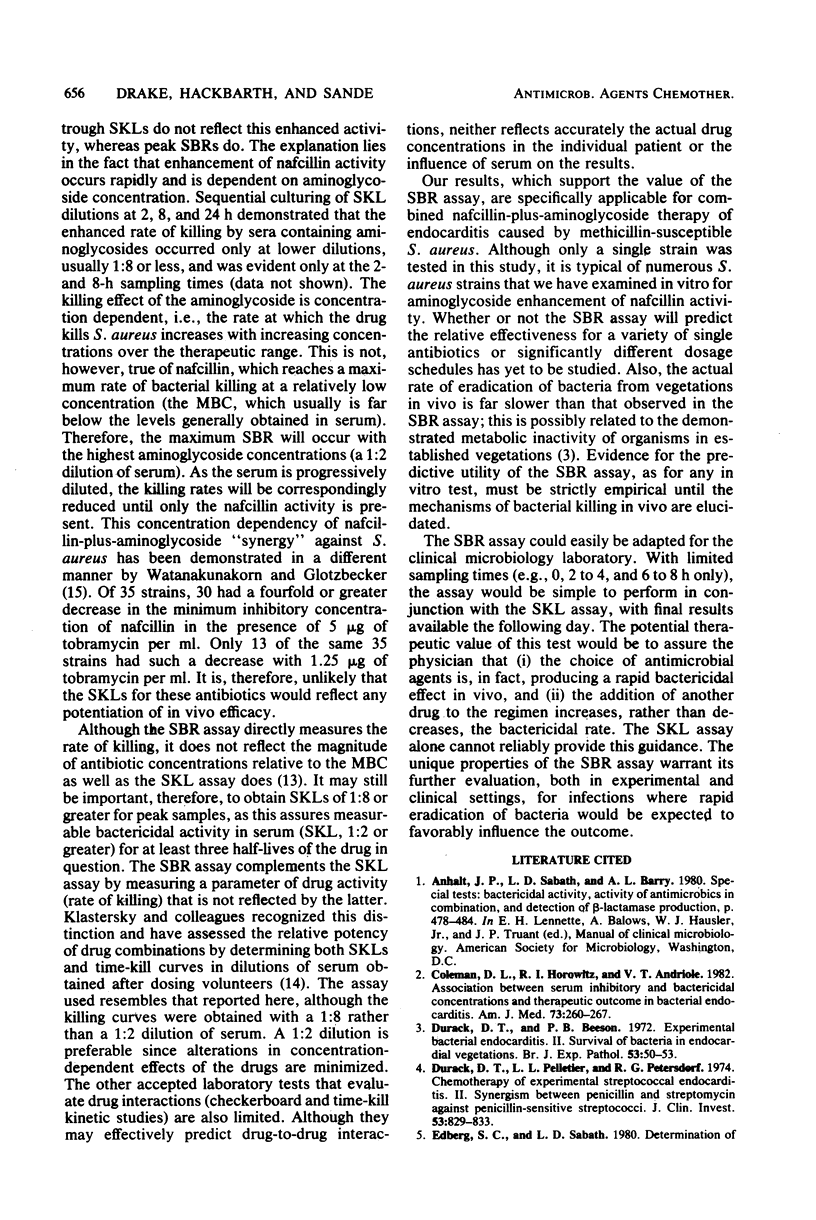
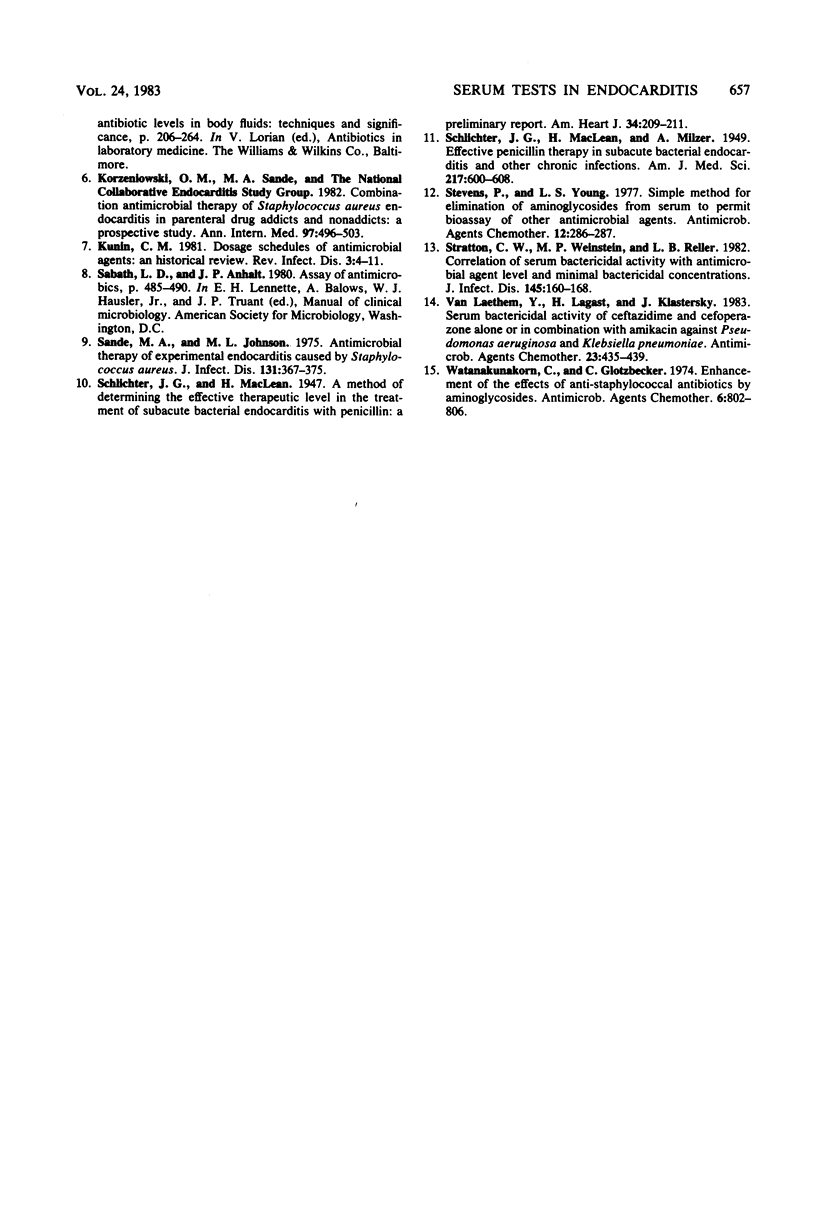
Selected References
These references are in PubMed. This may not be the complete list of references from this article.
- Coleman D. L., Horwitz R. I., Andriole V. T. Association between serum inhibitory and bactericidal concentrations and therapeutic outcome in bacterial endocarditis. Am J Med. 1982 Aug;73(2):260–267. doi: 10.1016/0002-9343(82)90188-7. [DOI] [PubMed] [Google Scholar]
- Durack D. T., Beeson P. B. Experimental bacterial endocarditis. II. Survival of a bacteria in endocardial vegetations. Br J Exp Pathol. 1972 Feb;53(1):50–53. [PMC free article] [PubMed] [Google Scholar]
- Durack D. T., Pelletier L. L., Petersdorf R. G. Chemotherapy of experimental streptococcal endocarditis. II. Synergism between penicillin and streptomycin against penicillin-sensitive streptococci. J Clin Invest. 1974 Mar;53(3):829–833. doi: 10.1172/JCI107622. [DOI] [PMC free article] [PubMed] [Google Scholar]
- Kunin C. M. Dosage schedules of antimicrobial agents: a historical review. Rev Infect Dis. 1981 Jan-Feb;3(1):4–11. doi: 10.1093/clinids/3.1.4. [DOI] [PubMed] [Google Scholar]
- Sande M. A., Johnson M. L. Antimicrobial therapy of experimental endocarditis caused by Staphylococcus aureus. J Infect Dis. 1975 Apr;131(4):367–375. doi: 10.1093/infdis/131.4.367. [DOI] [PubMed] [Google Scholar]
- Stevens P., Young L. S. Simple method for elimination of aminoglycosides from serum to permit bioassay of other antimicrobial agents. Antimicrob Agents Chemother. 1977 Aug;12(2):286–287. doi: 10.1128/aac.12.2.286. [DOI] [PMC free article] [PubMed] [Google Scholar]
- Stratton C. W., Weinstein M. P., Reller L. B. Correlation of serum bactericidal activity with antimicrobial agent level and minimal bactericidal concentration. J Infect Dis. 1982 Feb;145(2):160–168. doi: 10.1093/infdis/145.2.160. [DOI] [PubMed] [Google Scholar]
- Van Laethem Y., Lagast H., Klastersky J. Serum bactericidal activity of ceftazidime and cefoperazone alone or in combination with amikacin against Pseudomonas aeruginosa and Klebsiella pneumoniae. Antimicrob Agents Chemother. 1983 Mar;23(3):435–439. doi: 10.1128/aac.23.3.435. [DOI] [PMC free article] [PubMed] [Google Scholar]
- Watanakunakorm C., Glotzbecker C. Enhancement of the effects of anti-staphylococcal antibiotics by aminoglycosides. Antimicrob Agents Chemother. 1974 Dec;6(6):802–806. doi: 10.1128/aac.6.6.802. [DOI] [PMC free article] [PubMed] [Google Scholar]


